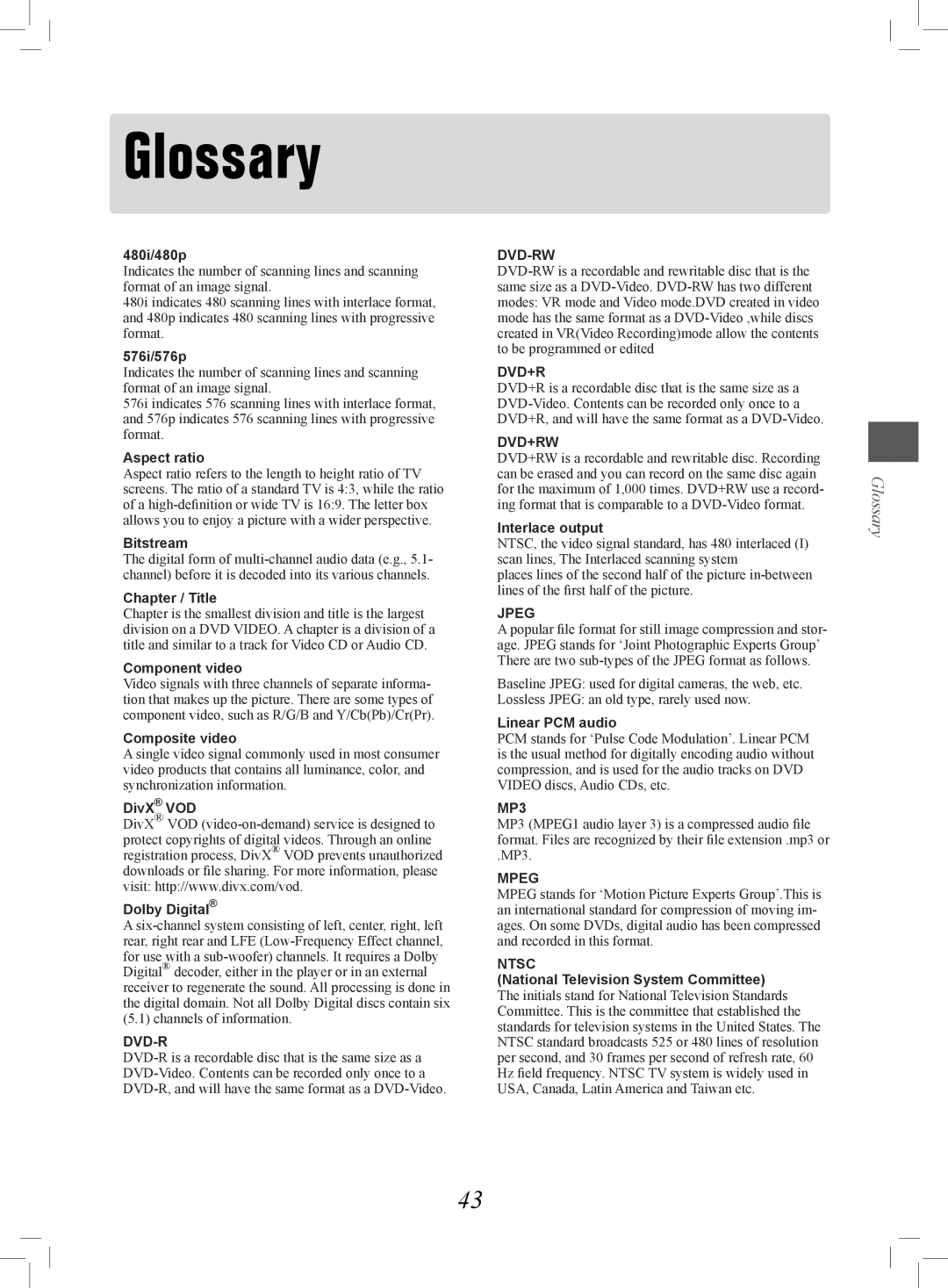
Glossary
480i/480p
Indicates the number of scanning lines and scanning format of an image signal.
480i indicates 480 scanning lines with interlace format, and 480p indicates 480 scanning lines with progressive format.
576i/576p
Indicates the number of scanning lines and scanning format of an image signal.
576i indicates 576 scanning lines with interlace format, and 576p indicates 576 scanning lines with progressive format.
Aspect ratio
Aspect ratio refers to the length to height ratio of TV screens. The ratio of a standard TV is 4:3, while the ratio of a
Bitstream
The digital form of
Chapter / Title
Chapter is the smallest division and title is the largest division on a DVD VIDEO. A chapter is a division of a title and similar to a track for Video CD or Audio CD.
Component video
Video signals with three channels of separate informa- tion that makes up the picture. There are some types of component video, such as R/G/B and Y/Cb(Pb)/Cr(Pr).
Composite video
A single video signal commonly used in most consumer video products that contains all luminance, color, and synchronization information.
DivX® VOD
DivX® VOD
Dolby Digital®
A
DVD-R
DVD-RW
DVD+R
DVD+R is a recordable disc that is the same size as a
DVD+RW
DVD+RW is a recordable and rewritable disc. Recording can be erased and you can record on the same disc again for the maximum of 1,000 times. DVD+RW use a record- ing format that is comparable to a
Interlace output
NTSC, the video signal standard, has 480 interlaced (I) scan lines, The Interlaced scanning system
places lines of the second half of the picture
JPEG
A popular file format for still image compression and stor- age. JPEG stands for ‘Joint Photographic Experts Group’ There are two
Baseline JPEG: used for digital cameras, the web, etc.
Lossless JPEG: an old type, rarely used now.
Linear PCM audio
PCM stands for ‘Pulse Code Modulation’. Linear PCM is the usual method for digitally encoding audio without compression, and is used for the audio tracks on DVD VIDEO discs, Audio CDs, etc.
MP3
MP3 (MPEG1 audio layer 3) is a compressed audio file format. Files are recognized by their file extension .mp3 or
.MP3.
MPEG
MPEG stands for ‘Motion Picture Experts Group’.This is an international standard for compression of moving im- ages. On some DVDs, digital audio has been compressed and recorded in this format.
NTSC
(National Television System Committee) The initials stand for National Television Standards Committee. This is the committee that established the standards for television systems in the United States. The NTSC standard broadcasts 525 or 480 lines of resolution per second, and 30 frames per second of refresh rate, 60 Hz field frequency. NTSC TV system is widely used in USA, Canada, Latin America and Taiwan etc.
Glossary
43
